Welcome to the vibrant world of sunflower coloring pages! Sunflowers, with their brilliant golden petals and striking presence, have long captured the hearts of nature enthusiasts and artists alike. In this article, we embark on an educational journey with a delightful collection of sunflower-themed coloring sheets that offer not only a therapeutic & creative outlet but also a window into the beauty of these radiant flowers. Whether you are an aspiring artist, a nature lover, or simply seeking a relaxing activity, these pages will not only bring joy to your coloring endeavors but also reveal the captivating charm of one of nature’s most beloved blossoms.

Simply choose the design that appeals to you the most, download the free PDF template, print it, and indulge in coloring to your heart’s desire.
Alternatively, you can also utilize the designs as embroidery patterns or draw inspiration for creating fine line tattoos.
Sunflower facts
If you’re new to my coloring pages, you’ll discover that I like to offer an additional dimension to the fun.
Not only can you enjoy coloring, but I also provide the opportunity to learn about the subject at hand, making it a very educational experience.
So, let’s dive right in and explore the world of colors and knowledge together!
Here are lots of fun and interesting, simplified, facts about sunflowers (my reference source can be found here):
- Heliotropism: Sunflowers are known for their heliotropic behavior, which means they track and face the sun as it moves across the sky during the day.
- Native to North America: Sunflowers are native to North America and were cultivated by Native American tribes for their valuable seeds and oil.
- Height and Size: Some sunflower varieties can grow to impressive heights, reaching up to 12 feet (3.6 meters) or more.
- Fast Growth: Sunflowers are fast-growing plants, with their stems capable of growing several inches in a day under ideal conditions.
- Symbol of the Sun: Due to their heliotropic behavior, sunflowers have become a symbol of the sun and its life-giving energy.
- Multiple Flowers: A single sunflower plant can produce multiple flowers, often arranged in a stunning pattern known as the “head.”
- Seed Production: Sunflowers are primarily grown for their seeds, and a single sunflower head can contain up to 2,000 seeds.
- Edible Seeds: Sunflower seeds are not only enjoyed by humans but also serve as a nutritious food source for birds and other wildlife.
- Oil Production: Sunflower seeds are crushed to produce sunflower oil, which is widely used in cooking and various industrial applications.
- Medicinal Uses: Some Native American tribes used sunflowers for medicinal purposes, such as treating snakebites and respiratory ailments.
- Drought Tolerance: Sunflowers are remarkably resilient and can thrive in dry and arid conditions, thanks to their deep root systems.
- Van Gogh’s Art: The famous Dutch artist Vincent van Gogh painted a series of still-life sunflower paintings, showcasing their beauty.
- State Flower: Kansas adopted the sunflower (Helianthus annuus) as its state flower in 1903, representing its agricultural significance.
- Biomass Production: Sunflowers are also grown for their biomass, which can be converted into biofuels and used as a renewable energy source.
- Pollinator Magnets: Sunflowers attract various pollinators, such as bees, butterflies, and other insects, making them valuable for biodiversity.
- Phytoremediation: Sunflowers are used for phytoremediation, meaning they can help extract harmful pollutants from contaminated soil.
- Sunflower Heads: The sunflower head is composed of two types of flowers—disk flowers in the center and ray flowers around the perimeter.
- Wide Variety: There are over 70 species of sunflowers, with diverse colors, sizes, and appearances.
- World Records: Giant sunflowers have set world records for their size, with some exceeding 30 feet in height.
- Global Production: Ukraine, Russia, and Argentina are among the leading producers of sunflowers worldwide.
These fascinating facts showcase the sunflower’s rich history, cultural significance, and ecological importance in our world.
However, there is MUCH more to learn about sunflowers.
If you would like to continue in your quest for sunflower knowledge, here are some other reputable resources to learn about them while coloring.:
- https://kids.britannica.com/kids/article/sunflower/353826
- https://www.almanac.com/plant/sunflowers
- https://www.britannica.com/plant/sunflower-plant
- To see all of my free printables, go here.
- To see an alphabetized index of my coloring pages, go here.
- To see all of my botanicals coloring pages, go here.
- To see all of my floral coloring pages, go here.
Coloring tips
Coloring a picture of a sunflower can be a delightful and creative experience.
Here are some of my best tips and tricks to make your sunflower art really stand out:
- Study Reference Images: Before starting the coloring process, look at reference images of sunflowers to observe their color variations, petal shapes, and overall appearance. This will help you create a more realistic or artistically accurate representation.
- Choose the Right Colors: Sunflowers come in various shades, from vibrant yellows to warm oranges and browns. Pick colors that match the mood you want to convey, whether it’s a bright and cheerful sunflower or a more subdued and artistic interpretation.
- Layering Technique: Use colored pencils, markers, or watercolors to create depth and dimension. Apply multiple layers of color, starting with lighter shades and gradually building up to darker tones. This technique adds richness to the artwork.
- Gradient Effect: To capture the sunflower’s natural gradient, start coloring from the center of the flower and gradually transition to lighter hues as you move towards the outer petals. This technique adds a sense of realism.
- Highlight and Shadow: Add highlights to the petals facing the light source to give the flower a 3D effect. On the opposite side, create shadows to enhance the depth and make the sunflower really POP off the page.
- Experiment with Texture: Sunflowers have unique textures, with their velvety centers and textured petals. Try using different coloring techniques like stippling or cross-hatching to mimic these textures.
- Contrast with Background: Consider the background of your coloring page. A darker background can make the sunflower colors look more vibrant, while a lighter background can create a more airy and delicate feel.
- Blend Colors: If you’re using colored pencils or pastels, experiment with blending colors together to achieve smooth transitions and a soft, natural look.
- Embrace Creativity: There are no strict rules when it comes to coloring. Feel free to explore imaginative color combinations and unconventional styles to create a unique and eye-catching sunflower artwork.
- Relax and Enjoy: Coloring is meant to be a relaxing and enjoyable activity. Take your time, embrace imperfections, and let your creativity flow. Enjoy the process of bringing the sunflower to life with your own artistic touch.
Remember, coloring is all about expressing yourself and having fun.
Embrace these tips and make your sunflower coloring a masterpiece that reflects your creativity and appreciation for these beautiful flowers!
Options For Printing:
Letter S is for sunflower writing practice worksheets
*My letter S is for sunflower coloring sheet printables are specifically designed to be used in a classroom setting, they are the only printable options on this page that do not need written permission to use in a public setting.
Please send the link to this post along if anyone asks you where you got them. Thank you!
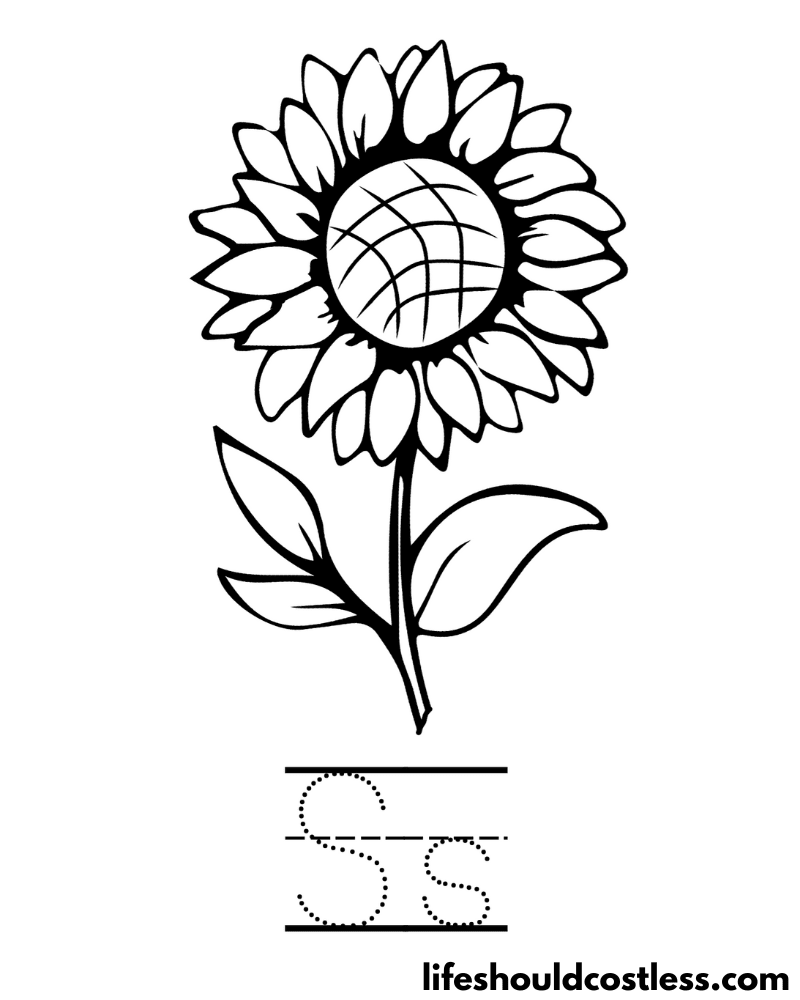
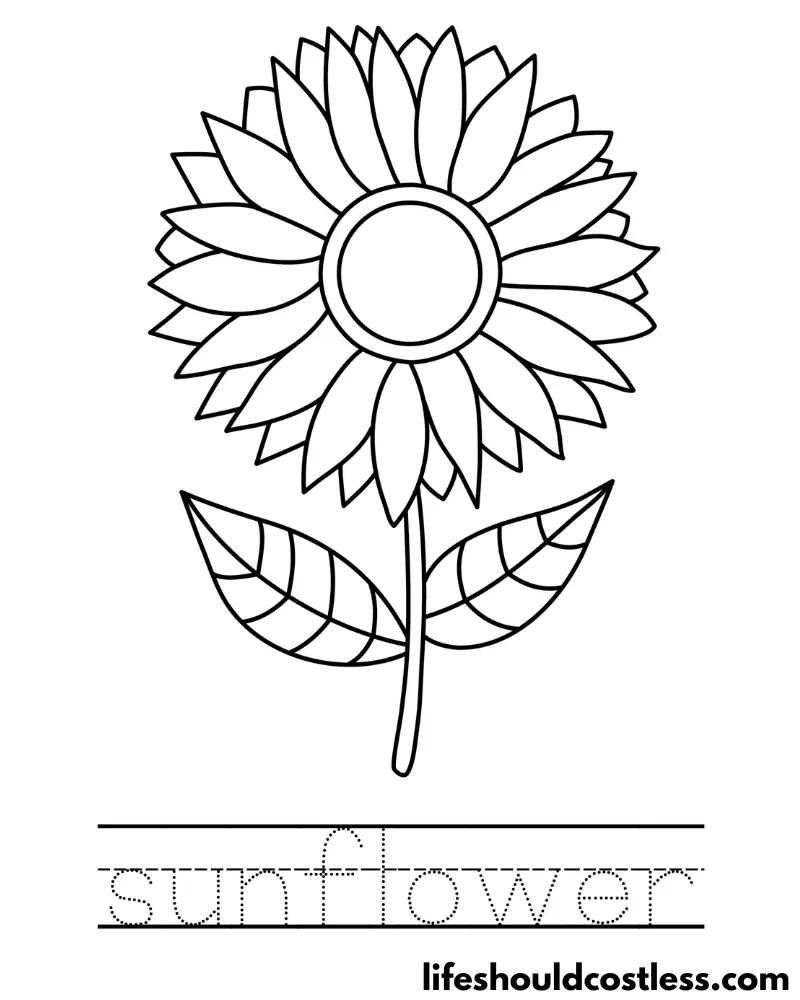
Various Sunflower Designs

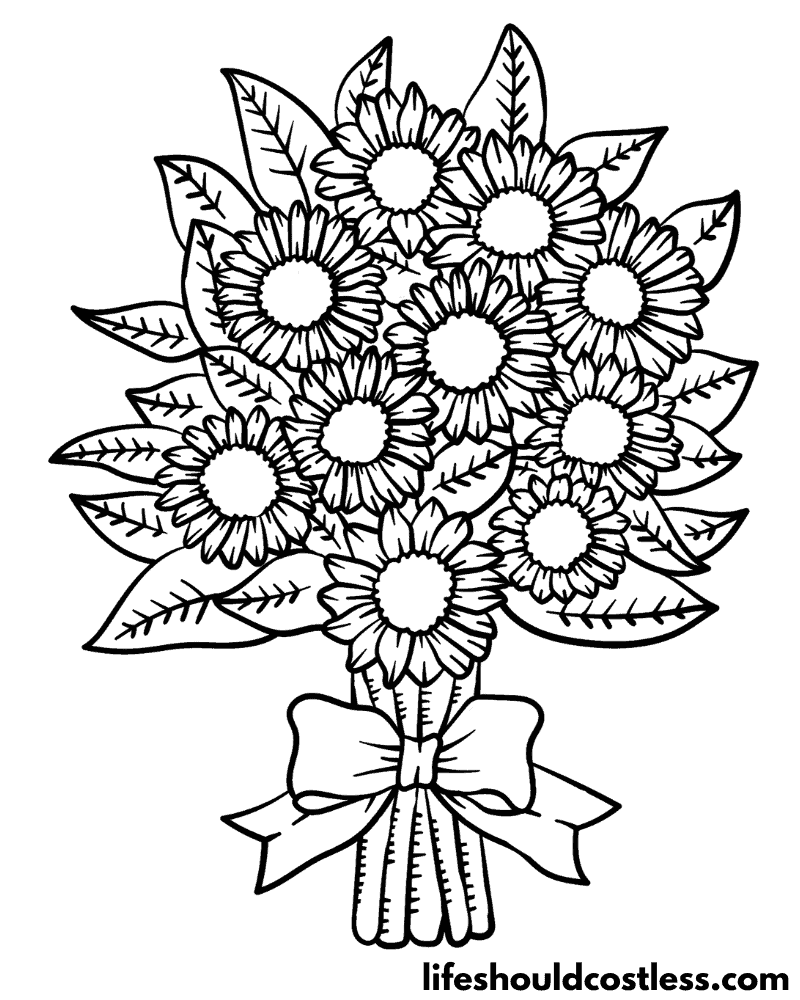
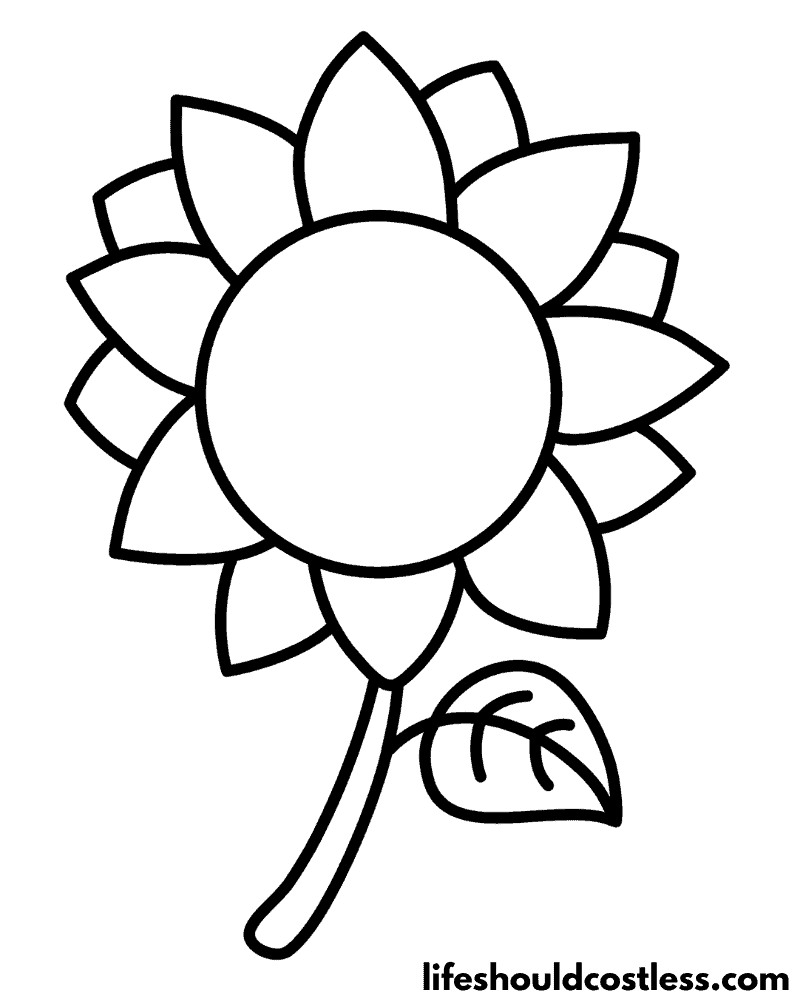
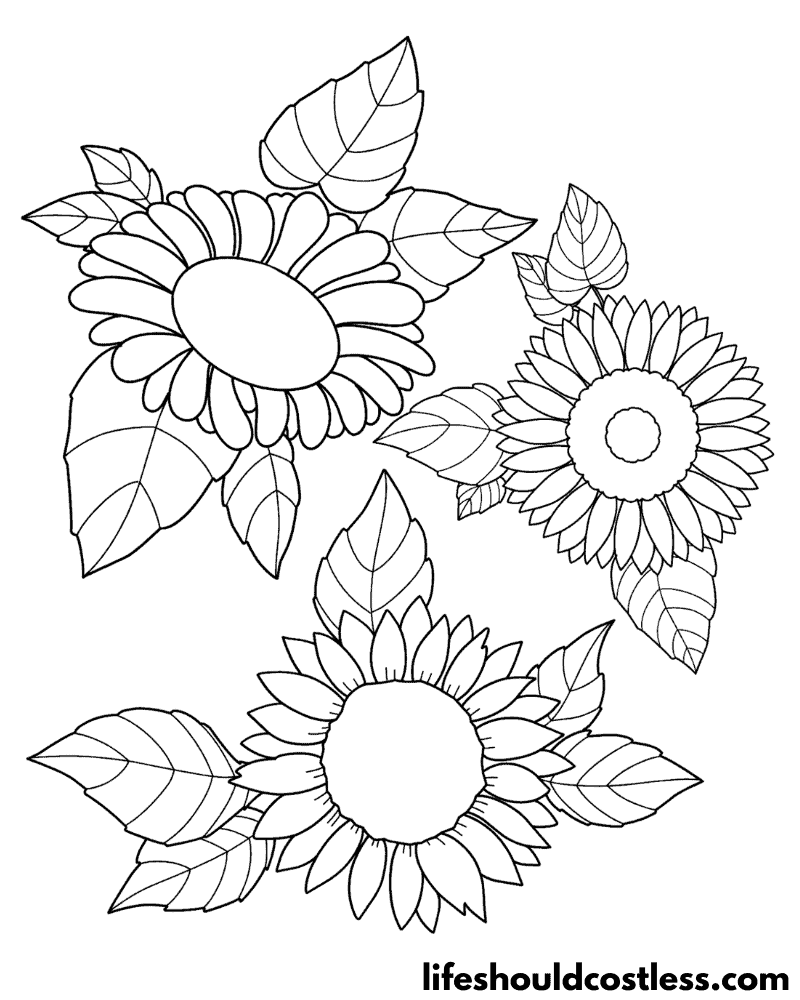
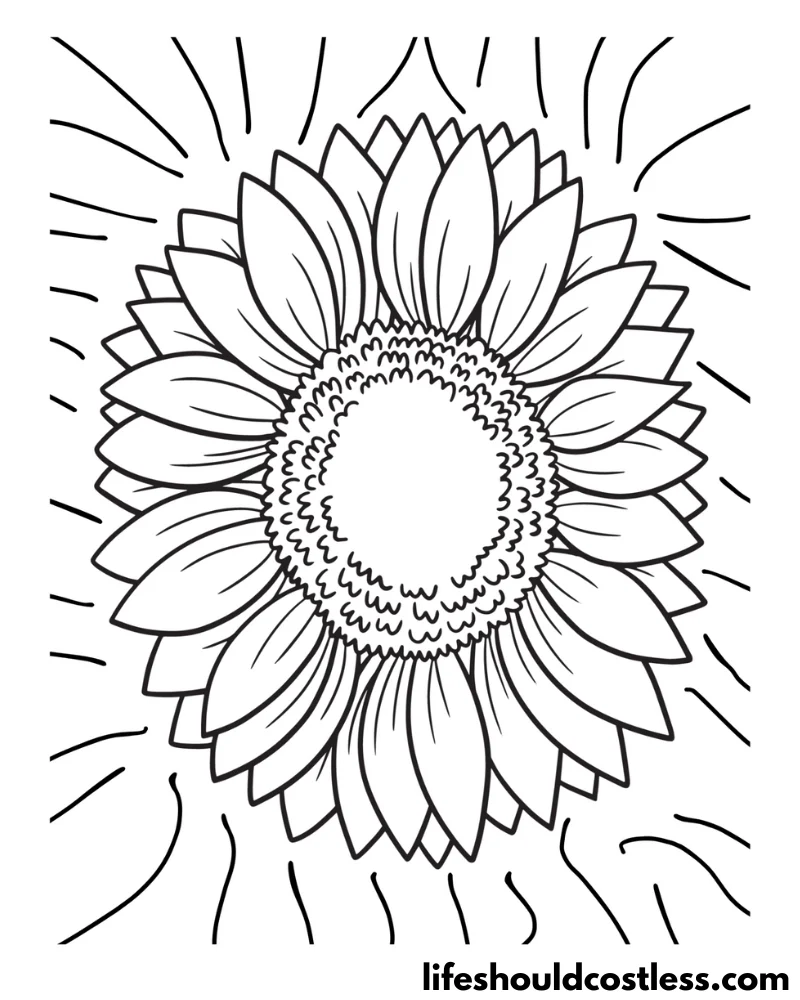
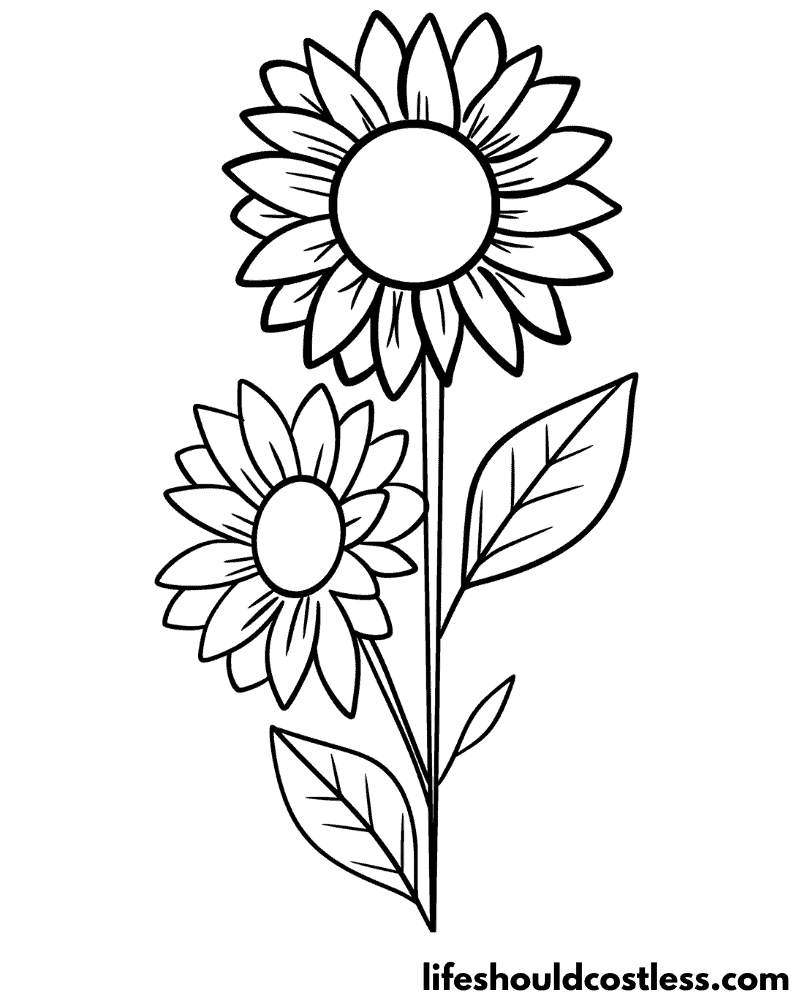
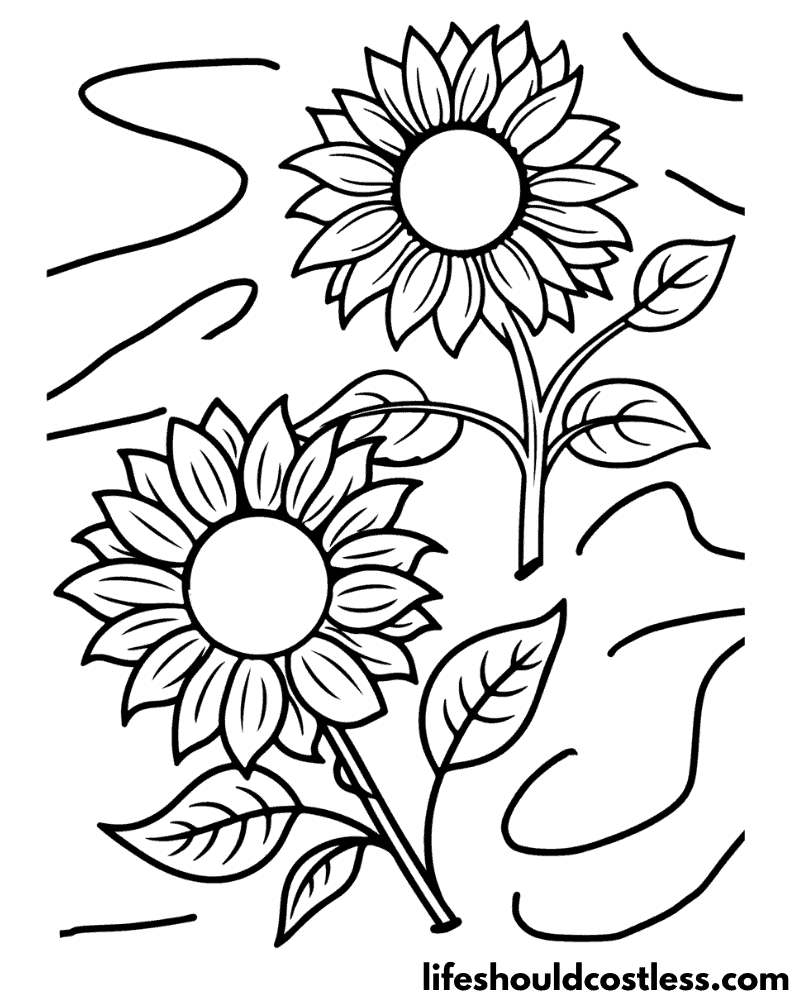
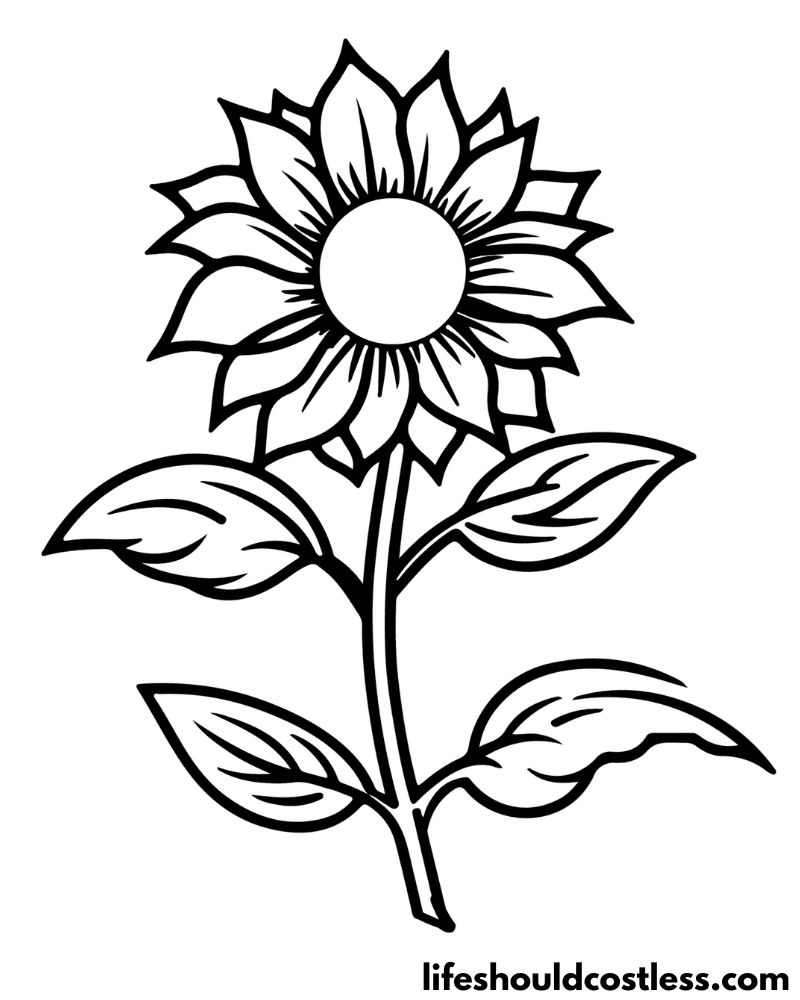
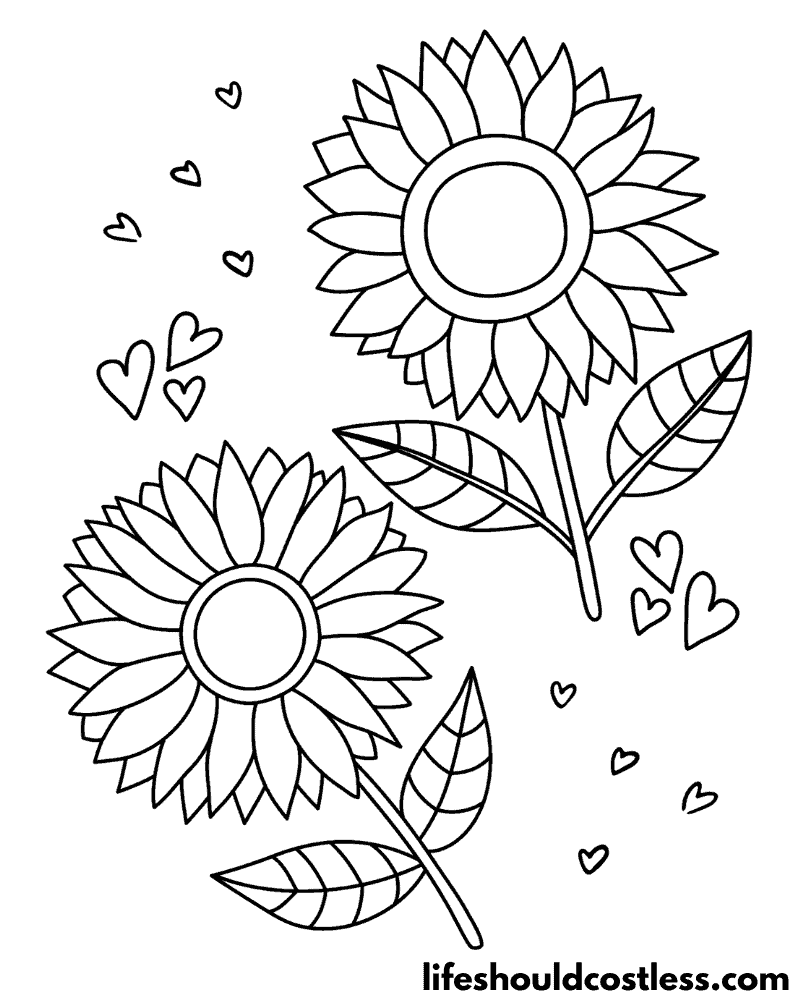
FAQ’s
Most sunflowers are yellow in color. The classic and widely recognized sunflower features bright yellow petals surrounding a dark brown or black center, known as the “disk.”
However, there are also other color variations and cultivars available, including orange, red, maroon, and even bi-colored sunflowers with combinations of colors.
Nonetheless, the iconic image of a sunflower is usually associated with its sunny yellow petals.
Sunflower petals are typically yellow in color. The bright yellow petals radiate from the center of the flower, creating a beautiful and vibrant appearance.
This characteristic yellow hue is what gives sunflowers their name and makes them a symbol of happiness and warmth.
However, as mentioned earlier, there are also sunflower varieties with different colors, such as orange, red, and bi-colored petals, but the classic and most common color is yellow.
The type of yellow found in a sunflower is often described as a rich, golden yellow. It is a warm and vibrant shade that closely resembles the color of the sun itself.
This golden yellow hue is one of the defining characteristics of sunflowers and is what contributes to their cheerful and uplifting appearance.
The intensity of the yellow can vary slightly among different sunflower varieties, but in general, it is a bright and eye-catching color that symbolizes joy, positivity, and the beauty of nature.
*I will add more sunflower colour / color questions and answers as the questions get sent to me.
Conclusion
In conclusion, sunflower coloring pages offer a delightful yet immersive experience that combines artistic expression with an opportunity to learn and appreciate the beauty of these enchanting flowers.
As you pick up your coloring tools and delve into the world of sunflowers, you embark on a journey where creativity knows no bounds.
Through the strokes of your colored pencils or the blending of your markers, you breathe life into the sunflower’s iconic golden petals, carefully replicating their radiance and warmth.
As you focus on the intricate details, such as the velvety texture of the center or the delicate veins on the petals, you gain a deeper appreciation for the complexity of nature’s artistry.
Beyond the joy of coloring itself, coloring pictures of a sunflower also serves as a platform for an educational experience.
As you immerse yourself in the task at hand, you can take a moment to learn about the rich history, symbolism, and ecological significance of sunflowers.
Discovering that these cheerful blooms were cultivated by Native American tribes for their practical uses or that they symbolize attributes like loyalty and adoration adds an extra layer of depth and meaning to your artwork.
The versatility of these coloring pages knows no bounds. You have the freedom to explore different color palettes and artistic styles, allowing your imagination to run wild.
Whether you choose to stay true to the familiar golden hues or experiment with unconventional colors, the result will be a reflection of your personal flair and creativity.
As you progress through your coloring journey, you may find moments of relaxation and mindfulness.
Engaging in this meditative process enables you to escape the stresses of everyday life, focusing solely on the present moment and the joyous task of bringing the sunflower to life on paper.
Moreover, sharing your colored sunflower pages can be a source of joy and inspiration for others.
By showcasing your creations, you contribute to a community of art enthusiasts who share a passion for these captivating flowers.
It becomes an avenue to connect, appreciate each other’s unique styles, and bond over a shared love for nature’s masterpiece.
In conclusion, sunflower coloring sheets are much more than a pastime; they are an opportunity to celebrate the wonders of nature, express your artistic talents, and engage in a meaningful and educational experience.
So, embrace the colors, cherish the process, and let your sunflower artwork bloom with creativity and joy.
Thanks so much for stopping by my blog and supporting my endeavors to make people’s lives a little easier/better/more affordable.
If you liked this post, or found it helpful in any way, please make sure to share it with your family, friends, and co-workers via social media.
Or you could even send them the direct link via email. Whichever way you choose to spread the love, I super appreciate it! ~Sarah
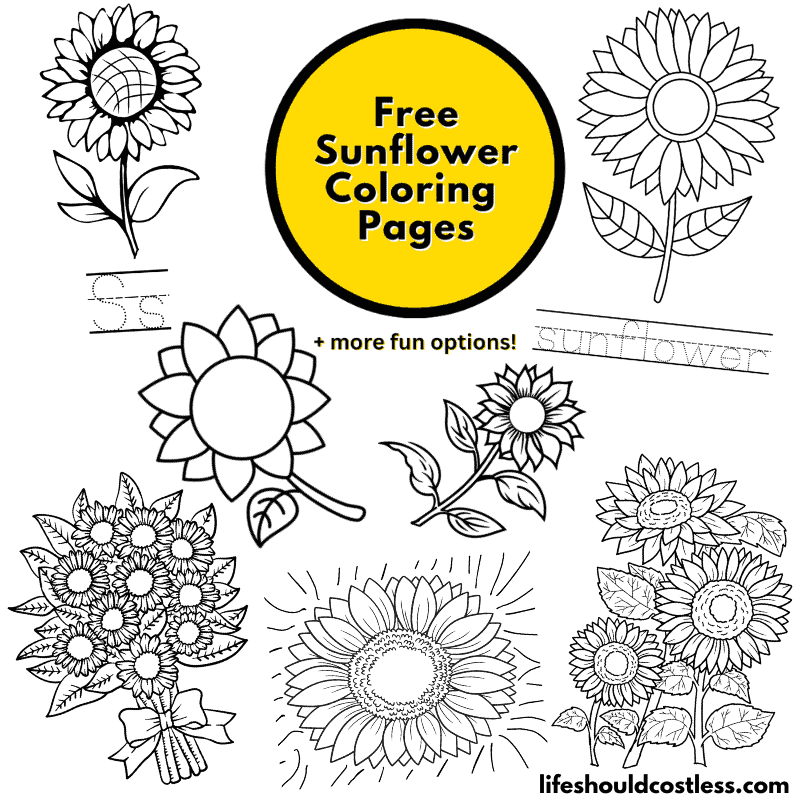
How To Follow & Support This Site
- If you would like to subscribe to my email list, go here.
- Make sure to follow along via social media, by going here.
- If you would like to learn how to really show your support to this site (at no cost to you), go here.
- If you would like to make a direct donation to the site, go here.
Check out my other free printables
- To see all of my free printables, go here.
- To see an alphabetized index of my coloring pages, go here.
- To see all of my botanicals coloring pages, go here.
- To see all of my floral coloring pages, go here.
Otherwise, here are direct links to several of my other floral-related posts that you’re also going to love:
Botanicals / Floral & Misc
Botanicals / Fruits
Other good resources for a printable sunflower
- https://clipart-library.com/sunflower-color-sheets.html
- https://www.colorwithfuzzy.com/sunflower-coloring-page.html
- https://www.first-school.ws/theme/coloring-pages/flowers-plants/sunflowers.htm
*This post was originally shared to this blog on 07/24/2023, and has since been updated to improve user experience, add video instruction, as well as to make it as shareable as possible across the social medias.
**Please note that I do try my hardest to provide factual, but easy to understand, information about each topic. If you notice a discrepancy in my coloring pages, facts, or see something that you deem “misinformation/incorrect” please make sure to notify me about it. I would prefer that you send me an email with a link to a more reputable resource on that subject, so that I can correct it as soon as possible. Thanks so much for helping this site become the best that it can be!
***Resources from djinkers were used in the production of this article.
